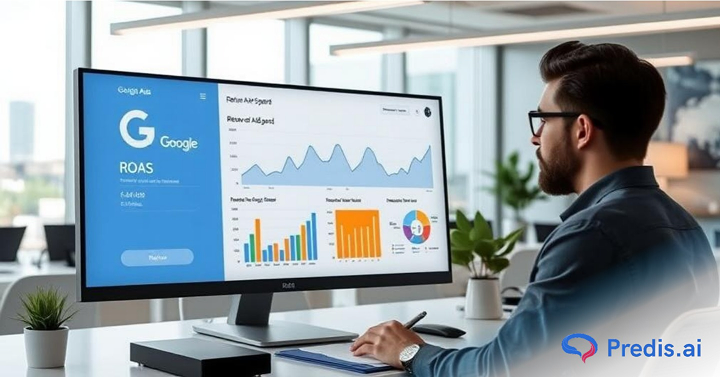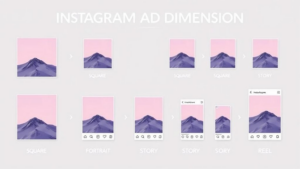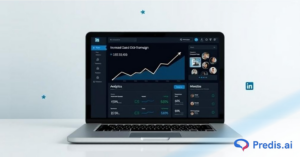In today’s advertising landscape, monitoring Return on Ad Spend (ROAS) is critical for success. The digital advertising spending surged to $667.6 billion in 2024, marking a 10.9% increase from 2023.
As advertisers pour substantial amounts into digital campaigns, understanding how these investments perform is essential. Among the various growth metrics, ROAS stands out.
But what exactly is ROAS for Google Display Ads, and why is it so important for marketers and business owners? What constitutes a “good” ROAS, and how do we calculate it? This blog answers all these questions and more. Keep reading to find out all about ROAS for Google Display Ads!
What is ROAS?
Return on Advertisement Spend (ROAS) measures the income produced for each dollar spent on advertising. It’s a key metric for understanding the effectiveness of your ad campaigns.
A higher ROAS indicates a more successful advertising strategy, resulting in greater revenue from your ad spend.
For example, if your ROAS is 4:1, you earn $4 for every $1 spent on ads. ROAS is similar to Return on Investment (ROI), but it specifically focuses on the revenue generated from advertising efforts. ROAS for Google Display Ads quantifies how well your ad investments pay off.
Unlike Click-Through Rates (CTR), which only track clicks, ROAS gives a clear picture of revenue generated. It helps businesses focus on actual conversions rather than just traffic.
You can track ROAS at different levels inside your Google Advertisements account, including the campaign, account, or advertisement group. This will help you identify which efforts are most profitable.

Calculating ROAS from Google Display Ads – A How-to Guide
ROAS calculation involves comparing the total revenue generated from your ads to the total cost of those ads. Here’s how you can do it:
- Identify Total Ad Spend: This includes all costs associated with your ad campaign, such as operational costs, ad charges, and freelancer fees.
- Calculate Total Revenue: This is the gross revenue generated from the ads.
- Apply the ROAS Formula: It is ROAS = Total Revenue / Total Ad Spend.
For example, if you spend $1,800 on display ads and generate $8,000 in revenue, your ROAS is 4.44. This means you earn $4.44 for every dollar spent. Alternatively, in Google Ads terms, ROAS can be calculated as Conversion Value / Cost.
Accurate ROAS calculations help businesses understand their ad efficiency and make informed decisions about future ad spending.
What is a Good ROAS for Google Display Ads?
Determining a “good” ROAS is subjective and depends on business goals, profit margins, and industry. Generally, a ROAS of 4:1 or 400% is considered outstanding.
This means you earn $4 for every $1 spent. However, what’s deemed a good ROAS can differ. For some businesses, a ROAS of 4:1 is outstanding, while others might aim for higher returns due to smaller profit margins.
On average, the conversion rate for Google Ads on the search network is 4.45%, which can influence ROAS expectations. Ultimately, a good ROAS is specific to your advertising strategy and business context.
Factors to Consider for ROAS Calculation
When calculating ROAS for Google Display Ads, consider these key factors:
1. Comprehensive Expense Coverage
To get a true picture of your ROAS, include all related expenses in your calculation. This means considering costs beyond the ad spend itself. For example, include expenses like landing page design services, employee salaries, managing telecom expenses and bid management tools.
For example, if you spend $1,500 on ads, $200 on a bid management tool, and $300 on landing page design, your total expense is $2,000. Ensuring all these elements are accounted for gives a more accurate representation of your ad spend.
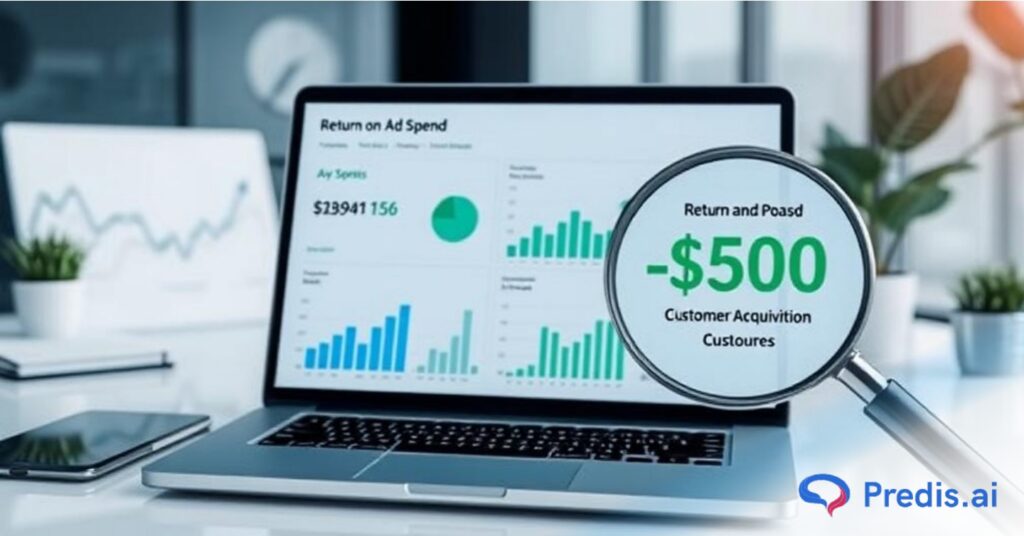
2. Excluding Non-Ad Revenue
ROAS should focus solely on revenue generated directly from your ads. For lead-based businesses, this can be a bit tricky since not all conversions lead to immediate revenue.
Google Ads allows you to create custom conversions, assigning a monetary value to actions such as quote requests or lead forms.
For example, if a quote request is valued at $250, ensure this is reflected accurately in your ROAS calculation. This helps maintain relevance and precision in your metrics.
3. Distinguishing ROAS from ROI
Understanding the difference between ROAS and ROI is critical for setting realistic advertising goals. ROAS measures the revenue generated from your advertising investment alone. On the other hand, ROI considers the total return on all investments, including operational costs and other business expenses.
Focusing on ROAS helps prioritize high-return ad campaigns. It enables you to target and refine your advertising strategies more effectively. By distinguishing between these metrics, businesses can set clear, actionable goals for their advertising efforts.
How to Maximize ROAS?
To boost your ROAS for Google Display Ads, consider these strategies:
1. Review ROAS Accuracy
Ensure all advertising costs are accounted for and that your attribution model reflects your campaign’s performance accurately. Review your attribution model—whether it’s first-click, last-click, or a data-driven model—since it can significantly impact your perceived ROAS.
Adjusting for these models can provide a clearer picture of your campaign’s true performance and help you make better-informed decisions.
2. Lower Ad Costs
Refine your keyword strategies to reduce unnecessary spending. Use negative keywords to filter out irrelevant traffic and focus your budget on the right audience. Work on improving your quality scores.
Higher quality scores lead to better ad rankings at lower costs. This directly enhances your ROAS. Regularly reviewing and optimizing your keyword lists can help maintain lower ad costs and better returns.
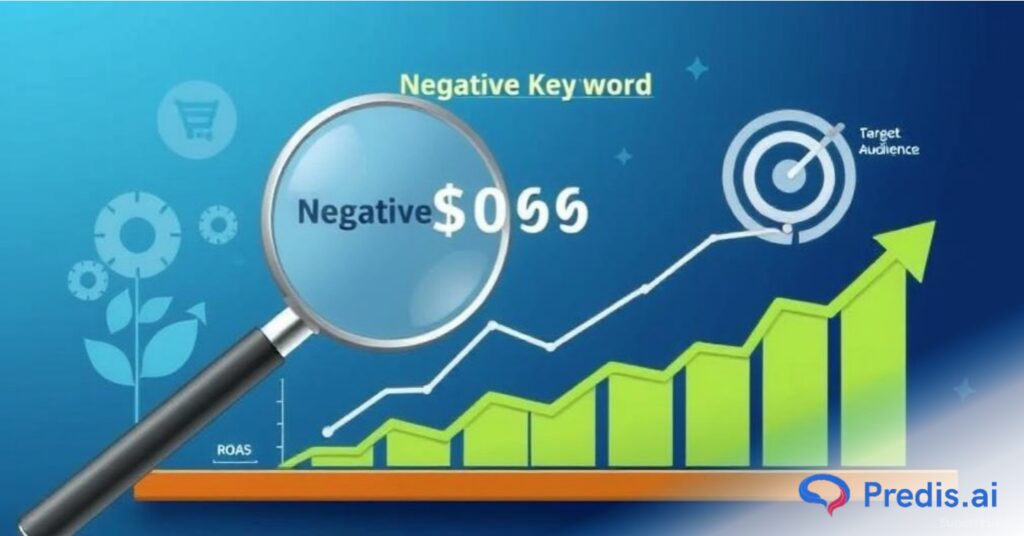
3. Improve Landing Pages
Connect ads to relevant, high-quality landing pages to boost conversion rates. Tailor landing page content to match audience intent and improve user experience.
High-quality, relevant landing pages increase the likelihood of conversions. Consistently test and optimize your landing pages based on user behavior and feedback. This results in improved performance and higher ROAS.
4. Track Relevant Data
Monitor metrics directly related to your ad campaigns, such as impressions, clicks, and demographics. Additionally, integrating expense management software with your advertising platforms can provide real-time cost tracking and help identify spending patterns across different campaigns. Use this data to refine and optimize your campaigns continuously.
By analyzing this data, you can identify trends, uncover insights, and make data-driven adjustments to your campaigns. Focus on metrics that provide actionable insights and enable you to tweak your strategies for better performance and higher ROAS.
Turn text into engaging Display Ads with Predis.ai’s Google Display Ads Maker—boost your ad clicks and engagement! Leverage the power of AI to make Display ads that convert.
Real-World Examples of Businesses Improving Their ROAS
What good is a strategy without proof? Here are three case studies demonstrating how businesses successfully increased their ROAS using the correct methods:
1. Allstate
US insurer Allstate discovered that 70% of their current customers were exploring new financial products online. To capitalize on this insight, they utilized Google’s Customer Match to tailor ad messages specifically for these customers.
This approach resulted in sales generation at just a quarter of the cost compared to acquiring new customers. By focusing on their current customer base with tailored messages, Allstate significantly improved their ROAS.
2. Tiffany & Co.
Luxury jeweler Tiffany & Co. faced challenges with visibility and search interest. To address this, they concentrated on refining the organization and categorization of their product feed for Google Shopping Ads.
This strategic optimization led to a remarkable 29% increase in their ROAS. By ensuring their products were accurately represented and easily discoverable online, Tiffany & Co. successfully boosted their ad performance.
3. Macy’s
Amidst the COVID-19 pandemic, US retailer Macy’s partnered with TVPage to integrate shoppable affiliate overlays on videos created by superfans and influencers.
This innovative use of influencer video commerce resulted in a 300% growth in eCommerce sales revenue. By engaging audiences with authentic and shoppable content, Macy’s dramatically increased their ROAS and overall sales.

Wrapping Up!
Calculating and optimizing ROAS for Google Display Ads isn’t as daunting as it seems. You only need to understand the factors that influence ROAS and implement strategies to improve it. This way, you can enhance the effectiveness of your ad campaigns.
However, achieving high ROAS consistently requires the right tools and techniques.
Convert text into appealing Google Display Ads with Predis.ai's Google Display Ad Generator. Leverage the power of AI to create display ads that convert.
Improve your ad clicks and engagement with stunning, scroll-stopping display ads. Effortless Ad Creation, Maximum Impact:
- Give a single-line text input to Predis.ai: Simply enter your text, and Predis.ai generates the best-converting display ad for you in seconds.
- Templates Galore: Make your ads stand out with a vast collection of professionally designed templates.
- Make changes like a breeze: Use the simple creative editor to change fonts, images, texts, and more instantly.
- Rich Animated Video Ads: Create dynamic, visually striking ads to enhance user engagement and click-through rate.
Maintain brand consistency, save time, and watch your engagement soar with captivating Google Display Ads. Try Predis.ai today to streamline and elevate your ad campaigns!
Related Content,
19 Google Display Ad Examples to Draw Inspiration


